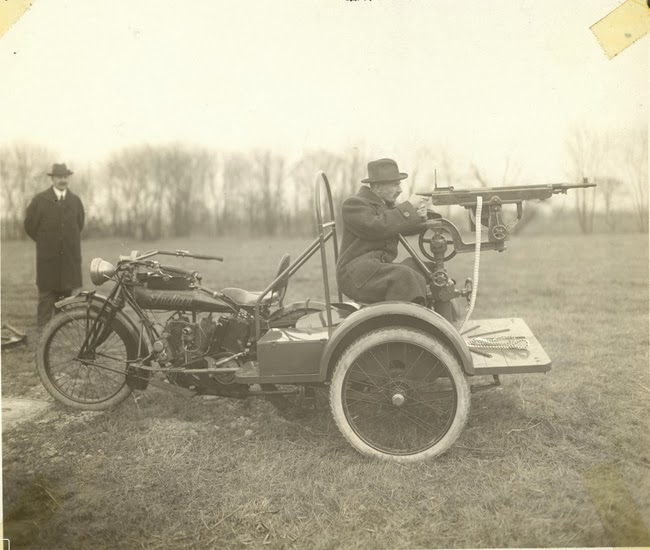In the early teens, Cygnet Rear Car Company took the idea of the horse drawn carriage and adapted it so that the horse was replaced by a motorcycle. Their business plan was simple, provide a form of transportation that was cheaper to own than a car, but carried more passengers or equipment than a standard motorcycle. They boasted that their rear cars could be removed in 30 seconds, allowing the owner to switch back to a standard motorcycle with ease. The Cygnet rear cars are pictured attached on both Harley-Davidson and Indian motorcycles, but it is unclear whether they made specific models for each manufacturer or if the rear car was a "universal fit" for any motorcycle.
They increased the attached motorcycle's payload by 500lbs, so the rider could carry an additional three passengers or a large load of packages for delivery. An extra brake came with the rear car as the single rear brake that most motorcycles of the time were equipped with was wholly inadequate for stopping a fully loaded vehicle.
Cygnet developed models for the commercial market as well. One such model was deemed a "motorcycle limousine" and featured a full enclosed passenger compartment.
With WWI raging in Europe, Cygnet also tried to grab some of the lucrative military contracts made available as the military began to become more mechanized. The rear car made a relatively stable gun platform and probably performed better than it's counterparts using sidecars. Below, a M1895/1914 Colt-Browning machine gun is shown being tested at Fort Moore by Captain Makaroff.
Even though the rear car seemed like a good idea, in the end most people either wanted a true car or a motorcycle, not both.






0 comments:
Post a Comment